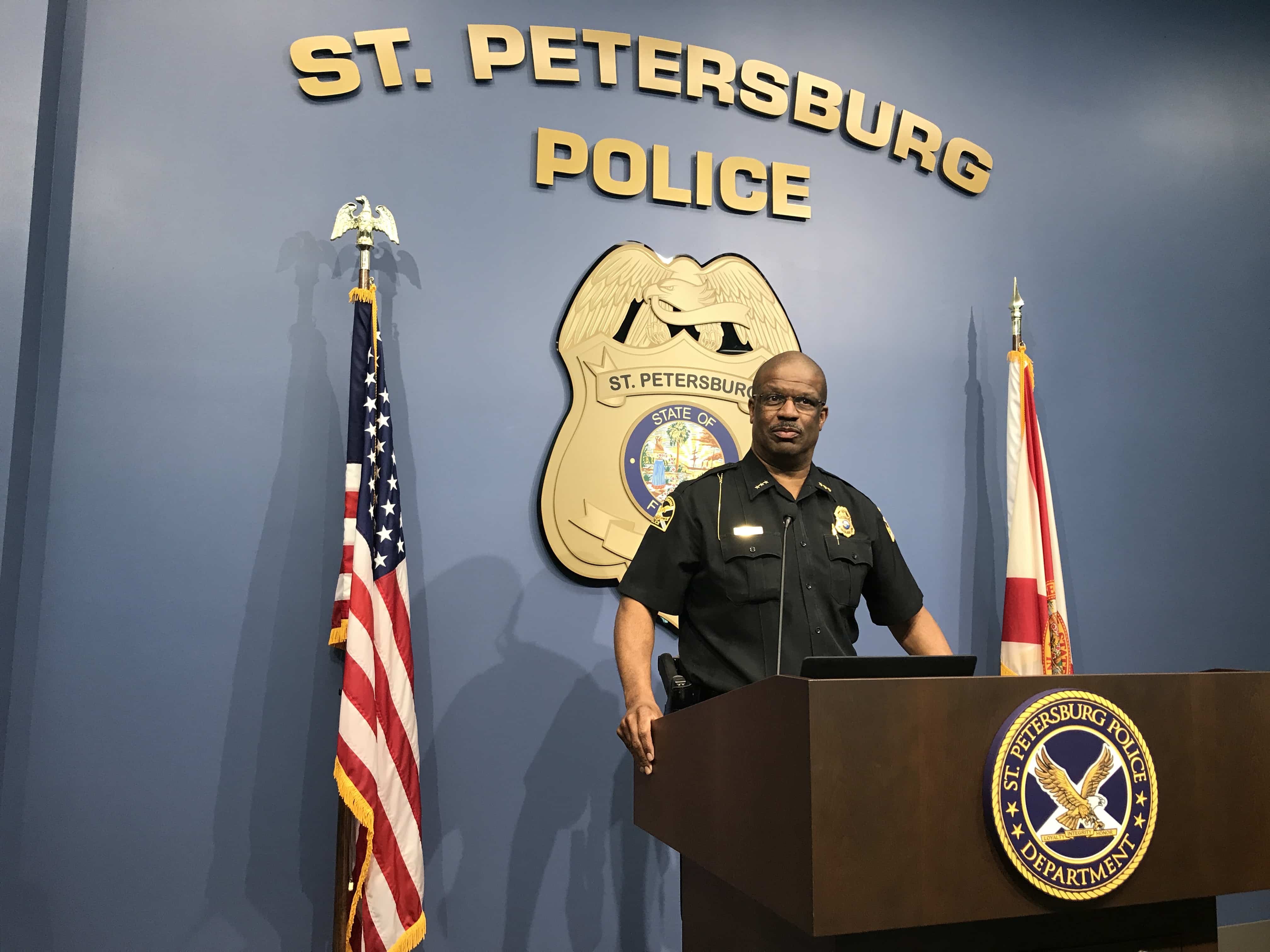Thrive
St. Pete police chief defends Community Liaison program, says department hopes to keep federal grant

The St. Petersburg Police Department is looking for a way to keep $3.1 million in federal funding originally intended to hire 25 police officers.
Police Chief Anthony Holloway told St. Petersburg City Council members that the department has reached out to the U.S. Department of Justice and Florida Sen. Rick Scott about ways to repurpose the money.
The police department was awarded a $3.1 million grant in June, through the Justice Department’s Office of Community Oriented Policing Services COPS Hiring Program, or COPS. Under the program, the city would hire the officers and be reimbursed by the Justice Department, deputy city administrator Tom Greene told the City Council.
Holloway said earlier this month the department would give up the grant in order to create a new division, Community Assistance Liaison, or CAL, in the wake of the killing of George Floyd while in the custody of Minneapolis police, and national and local calls for police reform.
The CAL division will be staffed by social workers and healthcare professionals who will respond to some non-criminal and non-violent calls for service instead of police officers going to those calls. To pay for the CAL program, the police department said it would use $3.8 million in city funds that had been earmarked to match the COPS grant.
Now, Holloway hopes to keep the federal funding.
“We’ve sent a letter to the COPS organization to see if we can re-allocate that money,” Holloway told City Council members Thursday. “We’ve had a conversation with Sen. Scott to see if we could get support to use that money for either this program or another program … If we can take that $3.1 million — since we’ve already been approved for the grant — and use it for something else, that’s what we’re trying to do now.”
Holloway said the police department gets 12,000 to 14,000 calls a year that potentially could be answered by the CAL team. “Thirty percent of our calls are for mental health. We need professionals to address these calls and make sure the person has the right care that they need,” he said.
Since it was unveiled, the CAL program has been heavily debated, with many raising concerns about the safety of the unarmed social workers and healthcare professionals who would be dispatched to calls for mental health, substance abuse, neighborhood concerns, poverty and youth issues such as truancy.
“There already are organizations out there — child welfare, community health people — that already respond to homes to address these issues. We just want to guarantee that when they call 911, that we can send the same service,” Holloway said. “If the healthcare professional is on a call and they feel like they are in danger, they can leave or they can talk to the person via the phone. These health care professionals are already trained in de-escalation when they are dealing with people and they are experts in these situations. Police officers will always, always respond to violent situations.”
Under the planned service model, a 911 operator would triage calls, asking questions to make sure it is safe for a healthcare professional to go to the home. The healthcare professional would meet with the individual one-on-one, conduct an assessment, determine the issues that need to be addressed and make sure the individual gets needed services.
Holloway cited the success of similar programs in other communities.
• A long-running program in Eugene, Oregon called CAHOOTS, provides mobile crisis intervention with an EMT/medica and crisis worker. Last year, CAHOOTS responded to 24,000 calls and requested law enforcement assistance in 150 instances.
• Denver has had a co-responder model since 2016 and recently started a pilot called STAR, or Support Team Assisted Response, run by the police department and including a social worker and paramedic team, distinct from law enforcement.
• Largo has a Behavioral Health Navigator who is dedicated to mental health and embedded with an officer. Sheriff’s offices in both Pinellas and Pasco counties have mental health teams who ride with officers.
Unlike those programs, the St. Petersburg Police CAL program would not tie up an officer on non-criminal, non-violent calls, Holloway said.
The police department hopes to release solicitations for outside agencies that would staff the CAL program by Aug. 14, with proposals due by Sept. 7, City Council approval by Oct. 1 and the program up and running by Nov. 1.
The proposed city budget allocates $850,000 in the fiscal year that begins Oct. 1 for the CAL program. It would be the first year of a three-year funding initiative for the program, Holloway said.
Separately, Holloway said the police department expects to complete a test of body cameras by the end of August and will ask for funding for that program. He estimated that could cost about $3 million.
The police department also plans to beef up defensive tactic and de-escalation training, most of that done in-house, Holloway said.







